For starters, we would like to expressly state that no one was ever in any serious danger during the road trip with the Lamborghini Aventador LP 780-4 Ultimae Roadster. Which, by the way, came about because our author wanted to impress his thirteen-year-old daughter.
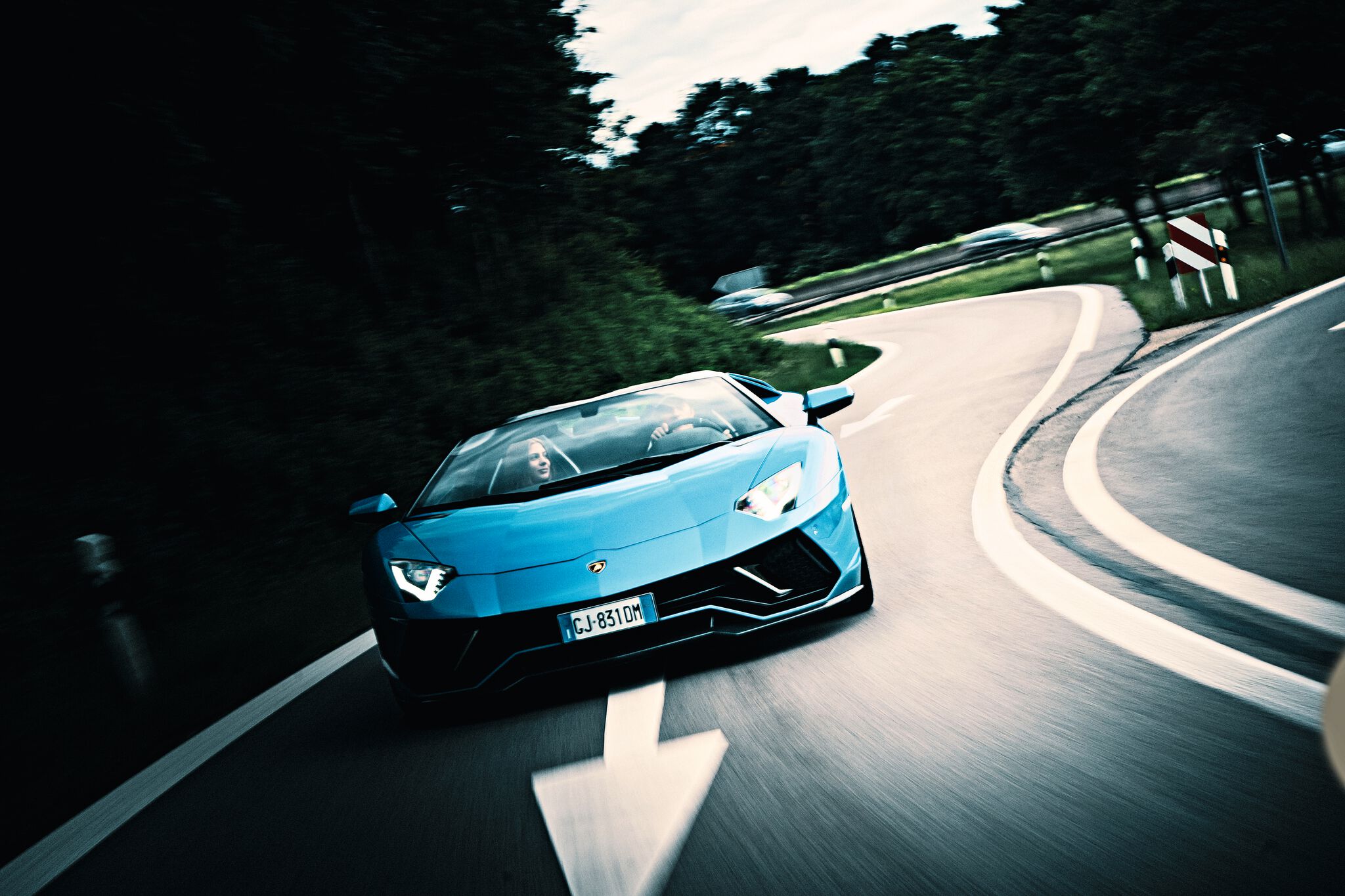
High above the Wolfgangsee in Austria’s Salzkammergut lake region, the three of us were sitting on a wayside bench after a long hike. Our backpacks lay open between us, each of us held a snack in our hands, and Mira’s braces glistened in the sunlight. “Why does Bela always get to ride along in those fast cars of yours and I don’t?” she asked me abruptly. Bela beat me to the answer: “Because you should be playing with dolls.” Oh, was he going to pay for that insolence! Mira stood up and gave him a hearty slap, which reverberated all the way up into the mountains. He tried to downplay the incident with a forced smile.
Mira is my thirteen-year-old daughter. Bela, as some readers will know, my twenty-year-old son. They’re half-siblings. Mira is the big cheese among the seventh graders at the Goethe Gymnasium in Vienna. She runs faster than any boy, and she can beat them all at arm wrestling. This fall, she’s starting karate, and then things at her school are sure to get really interesting.
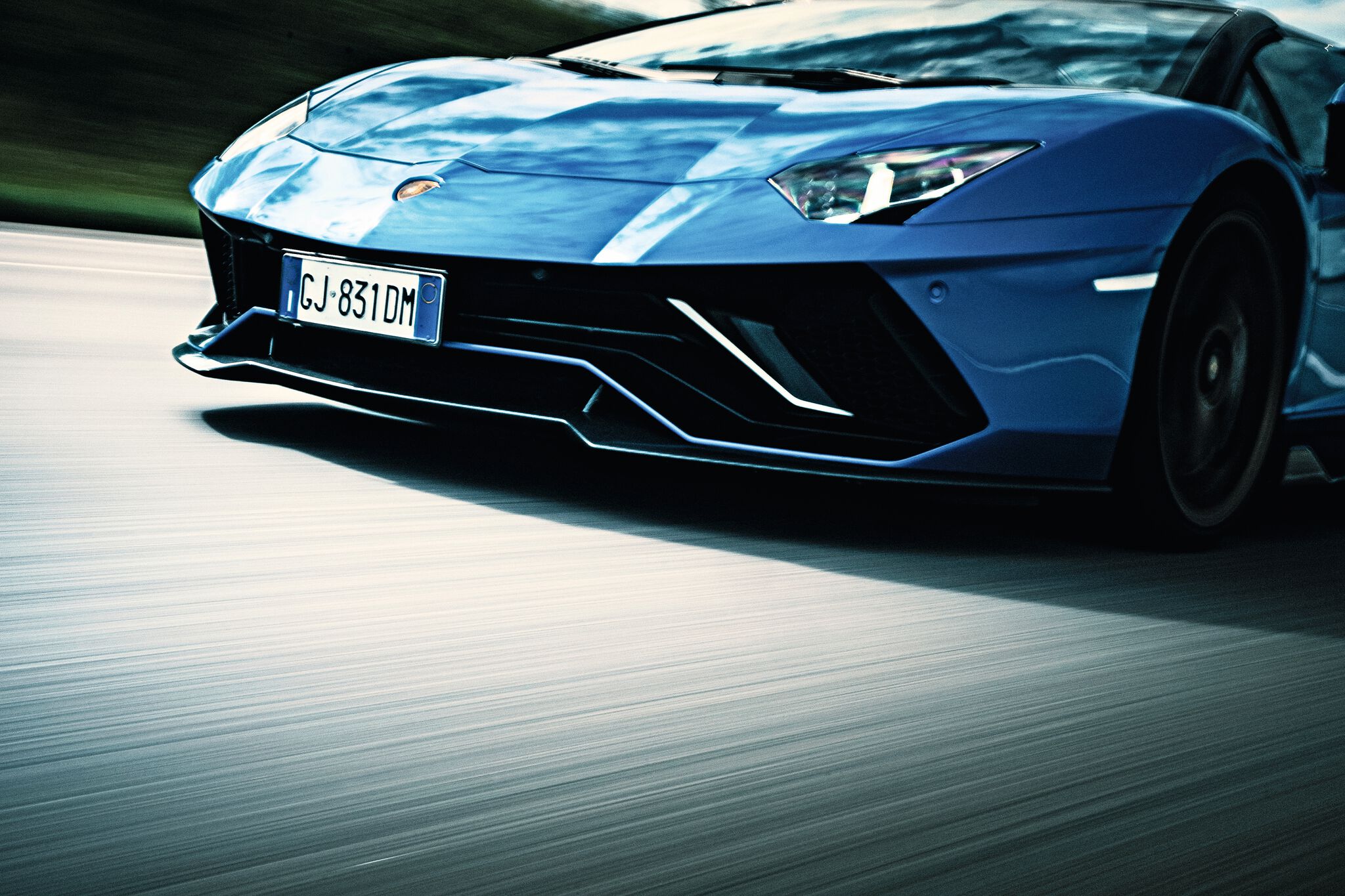
My daughter has been making herself scarce of late. When I ask her if we’re doing anything together, she throws her head back like a movie diva and says, “Dad, I’m thirteen. I have my own friends!” To which I say, “I know, but you’re not eighteen.” Then she rolls her eyes, which means, “You wouldn’t understand, you’re way too old for that.”
Teenage Rampage
I took the large water bottle out of my backpack and handed it to my daughter. “Mirli,” I said, “You never have any time for me.” She put on her best smile and gave me a hug, “Dad, you know that’s not true. So . . . when are we going for that drive?” I didn’t have to think twice about my answer: “Tomorrow or not at all.” To which Mira yelped: “Say what?”
And maybe it was at that very moment that, three hundred kilometers further east, someone stuck a little white note with black block letters under the windshield wiper of the blue Lamborghini Aventador LP 780-4 Ultimae Roadster: “Anyone who parks their car the way you do shouldn’t be allowed to reproduce.” A Durex brand condom in pink packaging was enclosed. I had parked the car in a garage in Vienna the day before. Because of its width and because the scissor doors need lots of space when they open, I took up two parking spaces. I usually take great care to stay within the markings, honestly I do. I wish upon people who don’t that a fly keeps landing on their face at night when they’re trying to go to sleep or that their nose starts running when they’re bagging their groceries at the supermarket checkout counter and they don’t have any tissues on them. The person who wrote that note must be of the permanently outraged sort, some lunatic with an overly active mind who goes stalking around parking garages, keeping an eye out for people unworthy of reproduction, otherwise he wouldn’t have a printed note and condom with him whenever he needs them.

So how did I end up with this Lambo? It was quite simple, really. An editorial assistant from the ramp office in Reutlingen called me to ask how I was planning to travel from Vienna to Munich, where they were organizing a happy hour at the fabulous Motorworld. A friendly get-together with lots of lovely people. Should she book me a flight or would I rather take the train? “Neither,” I replied, “I’d rather have a Lamborghini Aventador LP 780-4 Ultimae Roadster.” I pronounced “Ultimae” just the way it’s spelled, which is the correct Latin pronunciation. Though, admittedly, it does sound a bit stilted. I thought to myself: They really are riding on a high (Latin) horse down there in Sant’Agata Bolognese, aren’t they? “Ultimae” literally means “the last one” – the last Aventador. In other words, the last pure combustion engine car before Lamborghini joins the fleet of manufacturers sailing off into the inevitable age of electrification. The assistant said she would look into getting the car right away. A few hours later I received an email from Italy informing me that the Ultimae Roadster would be delivered to Vienna without delay. That’s how it’s done, I said to myself.
I was excited to have Mirli come along for the drive. When she saw the car in the garage, she let out a delighted “Oh, my God!” Then we saw the note and condom, and my daughter remarked what childish idiots adults can be. I couldn’t agree more. We didn’t throw the package away but stowed it in the glove compartment – no one would believe us otherwise. Our Aventador had a plaque fastened onto the driver’s side at the height of the A-pillar, clearly visible from the outside, that read “001 di 250”. That meant we were sitting in the very first of only 250 Ultimae Roadsters built! And it made us invincible: twelve cylinders, 769 hp, 355 km/h top speed! That certainly makes for some thin air. Only a handful of exotic cars can keep up with specs like that. The SSC Tuatara, for example, with its psychedelic 509 km/h top speed. Only possible on a salt lake anyway. (But what kind of a deranged name is that for a car? Something like half of the SSC Napoli football club crossed with a primitive reptile endemic to New Zealand? Hello?) The Koenigsegg Jesko (480 km/h) is also a superior rival. And its name isn’t all that bad. Jesko is a male given name, the short form of Jaromir or Jaroslav. It means “the brave one” or “the proud one”, “the one tested in battle”. Seen that way, “Koenigsegg Jesko” is the lesser evil – they could have called the car “Koenigsegg Jaroslav”. And while we’re at it, we should also mention the Bugatti Chiron (420 km/h). But you really only see Bugattis in marbled city showrooms along the world’s most expensive shopping streets, where car salesmen in black suits spend eight hours a day in complete solitude, like silent monks, unless some joker comes in to ask if he could take the car for a test drive because he’d like to register it as a cab. Let’s leave it at that – just a theory anyway. Vienna–Munich is ours. We won’t be seeing any Jaroslavs or lizards or French cars out of Molsheim. They’re as rare as a sober Irishman on Saint Patrick’s Day.

“Can I?” Mira asked. I told her she could. What she meant was: press the start button on the center console. The 6.5-liter naturally aspirated marvel situated longitudinally behind us roared to life. Mira flinched and the parking garage shook. We rolled on out. “Why is it lurching like that? Mom’s Citroën doesn’t do that.” “Because the Lamborghini can’t stand driving slow. It’s surly and ill-tempered. Like you were when you were a baby and we gave you spinach puree. You spit it in my face like crazy.”
It’s not like this was Mira’s first time in a super sports car. Once, I picked her up from school in a McLaren 600LT Spider, another time in a Porsche 911 Turbo S. But it was somewhat embarrassing for her, because her classmates asked her if her father was a multimillionaire and how much money he had in the bank. Mira passed the question on to me at the time: “Dad, how much money do you have in the bank?” “As much as I need.” “I don’t understand.” I explained it to her: “Well look, I go to the ATM and there’s always some coming out.” “But that’s normal.” “I don’t know if it’s normal for everyone.” “But mom says you’re as poor as a church mouse.” “I wouldn’t go that far.” Not long ago, I had received a letter from the director of my bank. He congratulated me on a very special anniversary: It had been twenty years from the last time my account was in the plus. My bank director loves fast cars, beautiful women and fat cigars, and he’s always up for a good joke. We immediately hit it off. At some point, however, he must have overlooked the eerie depths to which my account balance had plunged – an account balance like the Mariana Trench. And now it’s too late, because he knows that if he drops me, he’s in for it as well. The two of us are closer than ever, we’re still driving the Ennstal Classic together. Board and lodging are on me, never mind my account balance.
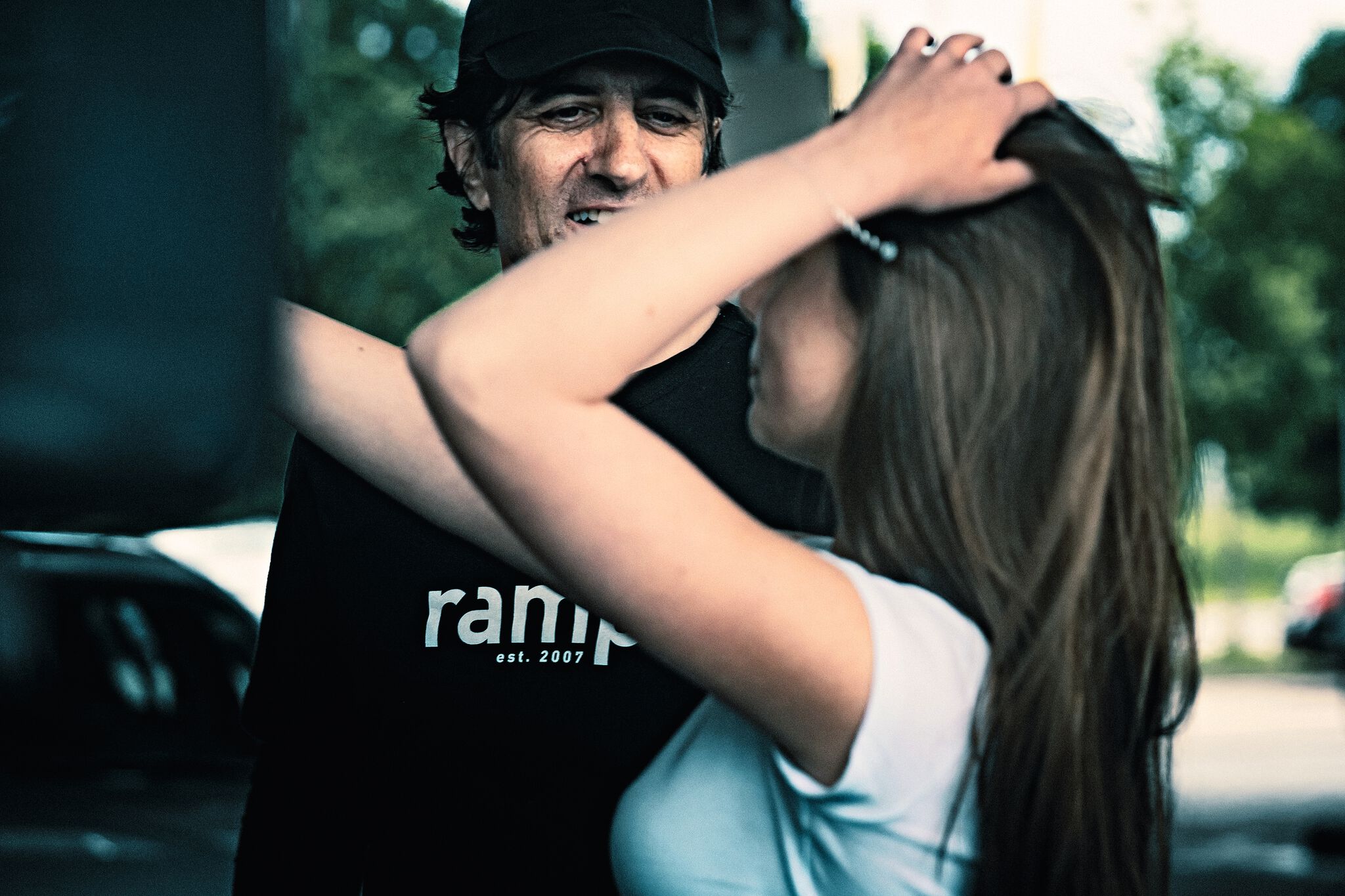
I pressed the “M” button. What are those paddles behind the steering wheel for again? The automatic seven-speed transmission switched to manual mode and the jerking was gone. Over the first few kilometers in city traffic, things went as usual. We were photographed, filmed, cheered and envied. Then it was time for action. Two-lane road. Lots of traffic. A long line of cars in front of us, stopped at a red light. To the left, a VW Golf. Chugging along at around 30 km/h, just like us. So far, so good. Problem was that the Golf driver’s head was completely turned to the right. He only had eyes for us, so he failed to notice how the red Tesla in front of him had already come to a stop. The noise was furious, there were shards and broken bits of car everywhere, the driver of the Tesla was at her wits’ end. Mirli and I somehow felt guilty, but we couldn’t suppress a fit of laughter.
“How fast are we going to drive, Dad?” she asked me as we left Vienna’s last gas station behind us. Ahead of us lay four hundred and fifty kilometers of highway. “In Austria,” I said, “no faster than 160. We want to be halfway law-abiding in our beautiful home country. As our famous writer Thomas Bernhard once said, we’re a country of six and a half million morons – well, nine million by now – but our policemen can still count to 170, and that’s when your license is gone.” “And in Germany?” Her eyes lit up. “How fast are we going to drive in Germany?” “My child,” I said – I looked at her and stroked her head – “you ask me a very difficult question. As you know, your father is obsessed with sports cars as if he were possessed by the devil. A demonic force passes from them to me, and as much as I love these cars – not as much as I love you or your brother, of course, but almost – they are also a cause of suffering for me. Lately, I’ve started foaming at the mouth when I hit 330. Not even that exorcist with the long black hair that I visited in his Romanian dungeon could help me. And . . .” “Dad . . . Mom says you’re completely crazy. That’s why she divorced you.” “Be a good child, my dear, and let your father finish. What I wanted to say was, don’t you lead me into temptation as well. As if it weren’t bad enough how much these monsters on wheels get to me. Besides, I have a responsibility to you, and as they say, never drive faster than your guardian angel can fly.” “Dad, drive 300 in Germany, please, please, pretty please, I really want to experience that just once!” I sighed. My gaze was lost in the distance. I left her plea unanswered.
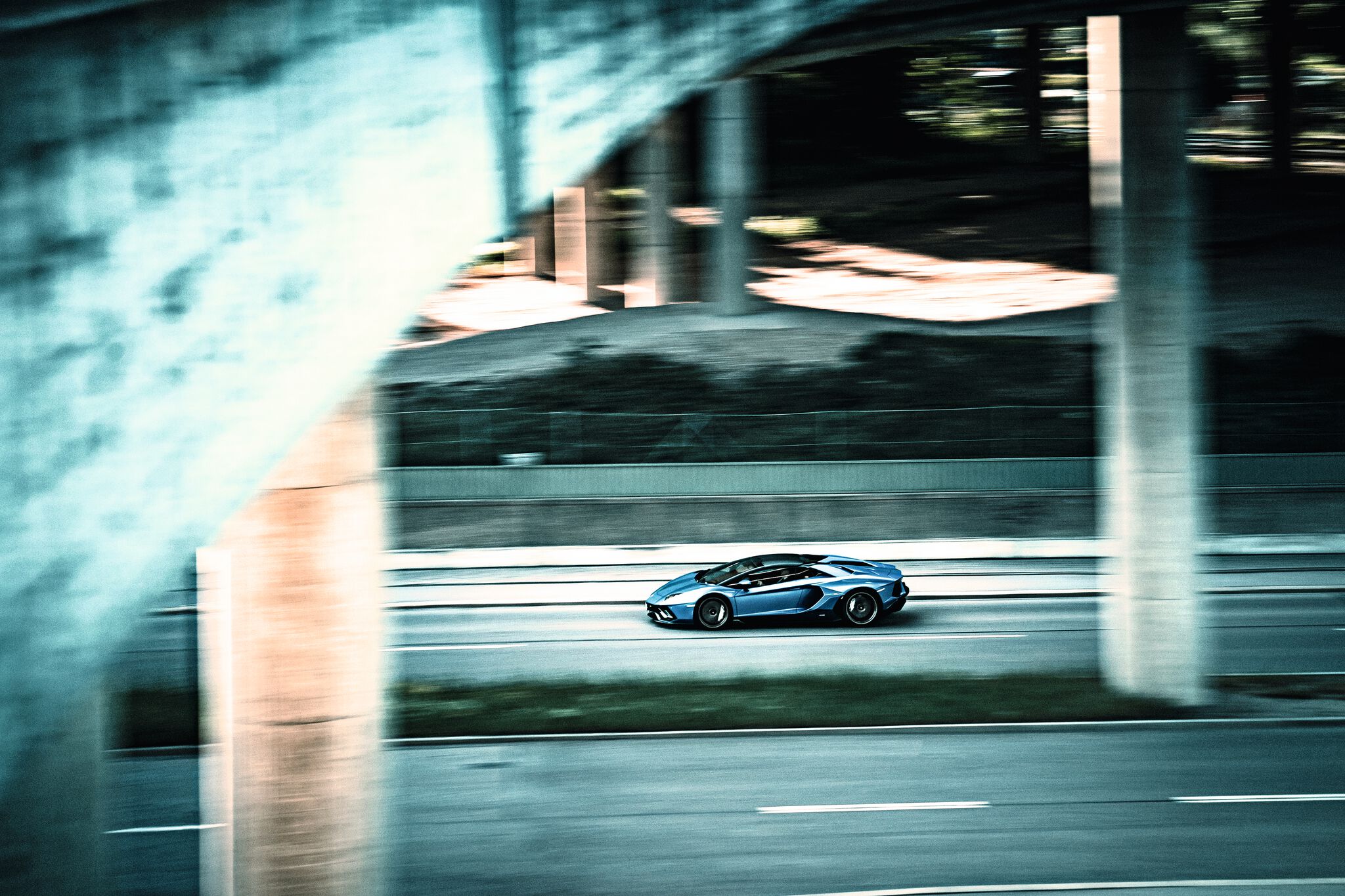
Of course, I wanted to let her feel the power and splendor of the last Aventador – to a lesser extent while we were still in Austria. We had reached the highway. All it took was a full throttle blast in second gear for no more than four seconds – 5,000, 6,000, 7,000, 8,000, 9,000 revs! The beast roared so piercingly once more, thundered off as if fired from a launch pad, annihilated space and time, and inhaled the airstream full of greed. Shifting from second to third gear was like a blow to the neck, and Mira almost swallowed her bubble gum in the process. “This is totally crazy,” she said, flabbergasted, “but I’m not scared at all. And I’m sooo looking forward to the German autobahn!”
Something amazing happened at the border, though any movie director would cut it out of the script because it is so unbelievable. Just before we crossed into Germany, Mira remembered that she’d forgotten her passport. Which actually shouldn’t be a problem, as there haven’t been any border controls for twenty-seven years. But Bavaria is different. As if there had just been a terrorist attack or war had broken out between Germany and Austria, policemen with machine guns were standing at the border, stopping anyone who seemed suspicious to them. So why shouldn’t they stop, of all things, a Lamborghini with Italian license plates, driven by a man who looks like the treasurer for the Cosa Nostra (with a dark blond teenage girl in the passenger seat who somehow doesn’t seem to belong)? I could already see us driving back to Vienna because they would refuse us entry. One of the two policemen had already raised his hand and asked me to stop. “Now we’re in a pickle,” I said as I lowered the window. I showed the policeman my passport and was all ready to ask him for leniency about Mira. “I’m sorry . . . ,” I began, but the machine-gun-toting policeman cut me short, “Everything’s all right,” he said. “Would you be so kind, as soon as the SEAT in front of you is far enough away, could you punch it? You have my express permission.” My first thought was that this can’t be true. Something like that would not be unusual at all in Italy. But out of the mouth of a Bavarian policeman (Bavarian policemen are, next to Texan sheriffs, the toughest law enforcement officers in the world), I would never have dreamed it possible. “Sure, we’ll do that,” I said with relief. We were, mind you, in a 60-km/h zone, but I was going to give it my all to satisfy the good man. For dramaturgical reasons, I stopped for a bit and made quite a commotion while idling: “Vroooom! Vroooom! Vroooom!” It was a scene straight out of the racing comic series Michel Vaillant. The policeman winked at me and gave me a thumbs-up. Mira whooped with excitement. Then I put the car in first gear. I still had the window down and said to the policeman: “Remember one thing, my dear friend and helper: Everything except all-wheel drive is a compromise. That’s a quote from Walter Röhrl. Farewell, I will include you in my evening prayers tonight!” Then I forgot myself, the four-wheel-drive Lamborghini stormed forward without a moment’s pause, at the end of the 60 km/h zone, we were doing a “permissible” 200, and at this point my thoughts turned from Röhrl to Leonardo da Vinci: “There will be wagons that are not pulled by any animal and which will drive along with incredible force.”
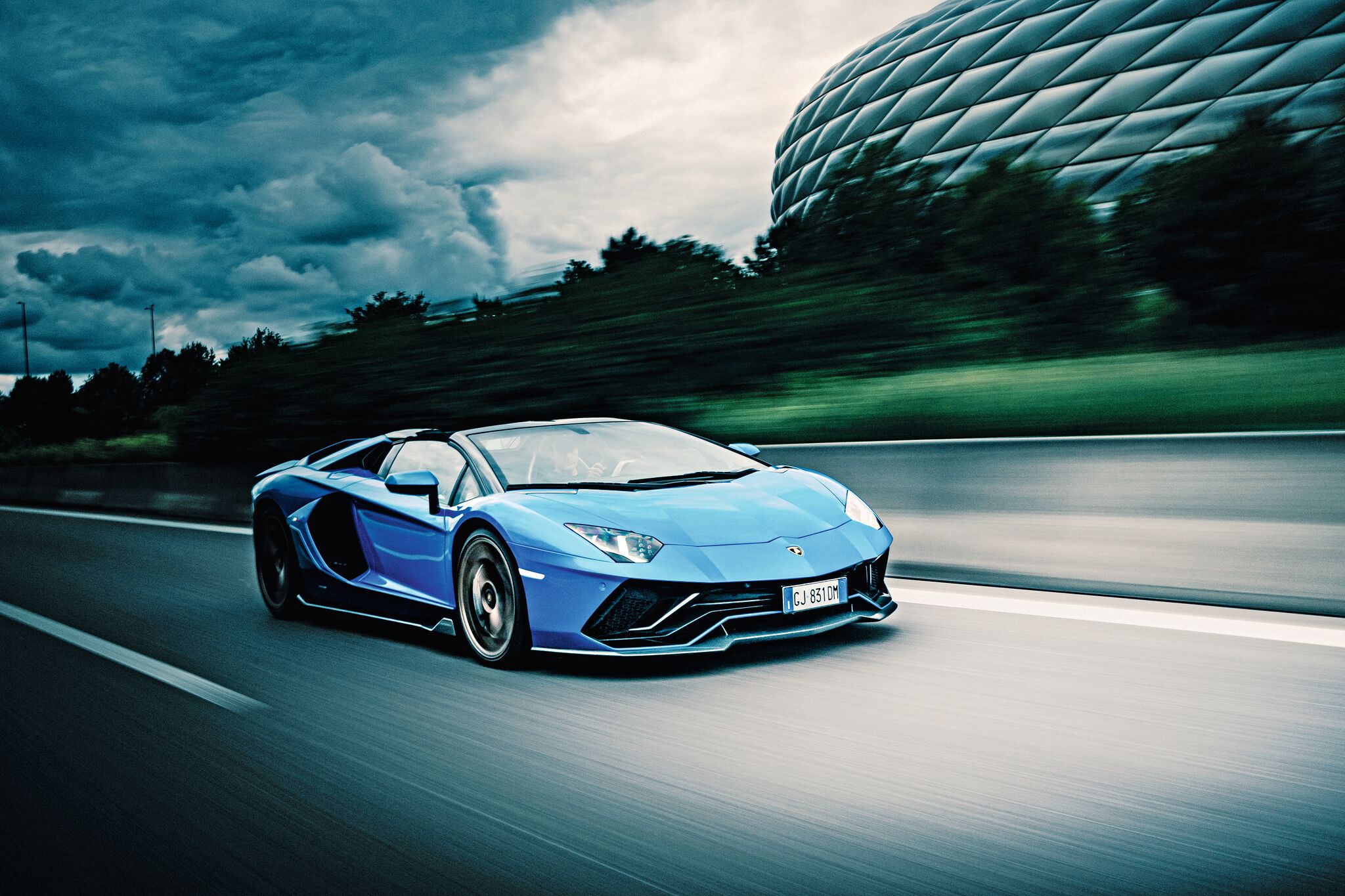
I would like to make one thing unmistakably clear: There is, of course, the risk that one of the border guard’s superiors, or even the Bavarian Minister of the Interior himself, will read these lines. What would happen then? Possibly an investigation to find out who was the black sheep among the officers. Of course, I would come to the defense of that exemplary policeman and swear under oath that I wrote this story aboard a Thai fishing boat under the influence of magic mushrooms and that none of it was true.
There was a lot of traffic on the German autobahn. No chance of going all out and do this sports car some justice. We played three rounds of Twenty Questions with famous persons. The first time I was the early humanist Dionigi di Borgo San Sepolcro (c. 1300–1342), the second time the medieval troubadour Walther von der Vogelweide (c. 1170–1230), the third time Ray Harroun, the winner of the first Indianapolis 500 (1911). Mira guessed none of the three, although each time I gave her the valuable hint that the person in question was already dead. Mira was her mother the first time, her uncle Herbert the second time, and her best friend Alicia the third time. Amazingly, I guessed all three.

But slowly my passenger was growing impatient. She still had hopes of experiencing three hundred kilometers per hour. I was undecided. But even if I had wanted to – the traffic wouldn’t have allowed it. It wasn’t much farther to Munich. We were approaching the long straight through Hofoldinger Forest. There was already much less traffic here. I made a decision. But I won’t write down in detail what happened on the following twenty kilometers. I only want to tell you, dear readers, because I consider it my chronicler’s duty, that we were in seventh gear and that I was frothing a bit at the front of my mouth again, but that I was able to quickly contain it with my tongue before it ruined my black ramp T-shirt, and that at no point did I endanger my daughter’s life, which lies before her like a beautiful and as yet unfulfilled dream. It is extremely important to me that you take note of this, that goes without saying!
In Munich we were both so heated up that I finally turned the roadster into a roadster. Not really an easy task, because it takes more than the push of a button to lower the hardtop into open position. We had to stop and do some work that required a bit of manual dexterity, and I almost broke two of my fingers doing it. The roof consists of two panels that want to be taken apart and stowed in the front trunk. But that meant there was no more room for our travel bag, small as it was, so we had to move it into the cabin with us. You pay more than €400,000 for a car like this, and then you don’t even have enough space to stow a makeup bag if you want to drive with the top down. Not a lot of people can afford to do that, but Lamborghini can, and you just have to love them for it.

We arrived at Motorworld, that unique automotive experience on the site of the former railway repair plant, in the afternoon. More than twenty-five of the most valuable and exclusive car brands can be found here in Motorworld’s stores, showrooms and specialized workshops. Just as special is the four-star Ameron Hotel that forms part of the complex and whose rooms overlook it all. Mira and I glanced at a couple of brand-new McLarens, one glowing bright orange. The sight had apparently made her crave orange soda, because she went to the minibar and took one out. Then she sat down on the bed with her legs stretched out, pulled out her cell phone and called up her best friend Alicia: “You won’t believe what I did today!”
rampstyle #26
Two thin ovals far up inside a circle, a curved arc below, sketched on sunny yellow. In a split second, our brain has combined the elements into a smiling face, instantly putting us in a good mood. Wonderful! A smiley like that just feels good.
The smiley was invented twice: once in 1963 by Harvey Ball, a graphic designer and advertising expert, who was commissioned by a U.S. insurance company to create something to motivate its employees. The company paid $45 for it, but Ball never had the idea of applying for trademark protection. Franklin Loufrani, a French management consultant, was more enterprising. He placed his smiley in the newspaper »France Soir« in 1972 as an indication of good news and had it legally protected. So much for the first round of inventions. We owe the second invention to Scott Fahlman. The professor of computer science wrote on the Carnegie Mellon University electronic discussion forum on September 19, 1982: »“I propose the following character sequence for joke markers: :-). Read it sideways.« It was probably the ten silliest minutes of his life, Scott Fahlman revealed extremely gleefully in conversation. So let’s take note right here: Just ten minutes of silliness can make the world a happier place.
With this in mind, we wish you a lot of fun!
Text: Kurt Molzer for ramp
Photos: Matthias Mederer · ramp.pictures











